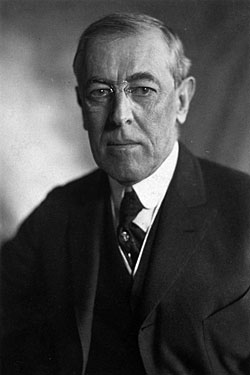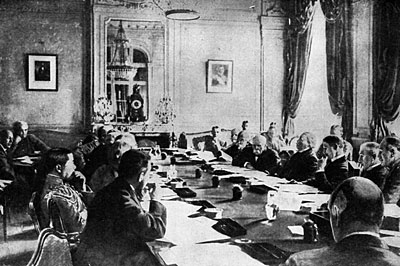Wilson’s Fourteen Points and Peace Treaty

Woodrow Wilson
President Woodrow Wilson outlined his aims for post-war democracy in what is called Wilson’s Fourteen Points. Under the Fourteen Points, he outlined recommendations for adjusting boundaries and principles to oversee international conduct. By adjusting boundaries, Wilson stated, Austria-Hungary’s people would have the power to control their future. Wilson’s aims of self-determination for Austria-Hungary did not, however, include a formula for boundary adjustments. In order to oversee international conduct, Wilson proposed open, free-trade agreements, a reduction in arms, and open seas. He also proposed the League of Nations to implement the Fourteen Points and ensure peace and security for all of its members. All countries would be invited to join.
The League of Nations was rejected by Congress who felt that the United States would be pulled into small wars against their interests. Wilson’s objectives were progressive and ideal. Though he did not get support for all fourteen of his points, a peace treaty was presented to the Germans. The treaty, known as the Treaty of Versailles, included a reparations bill that would cost Germany $33 million for the damage to the economies of the Allied Nations. It also created both Czechoslovakia and Yugoslavia.
